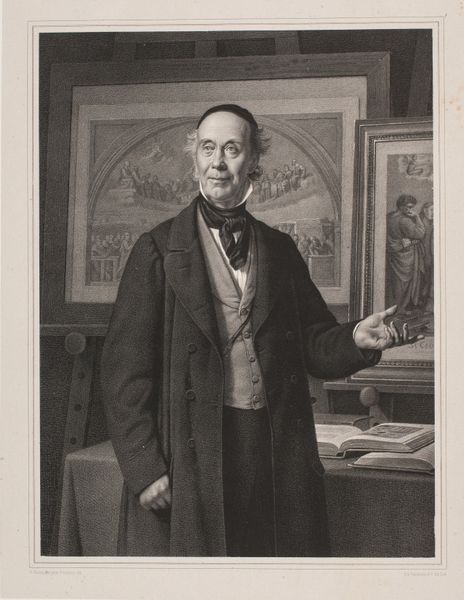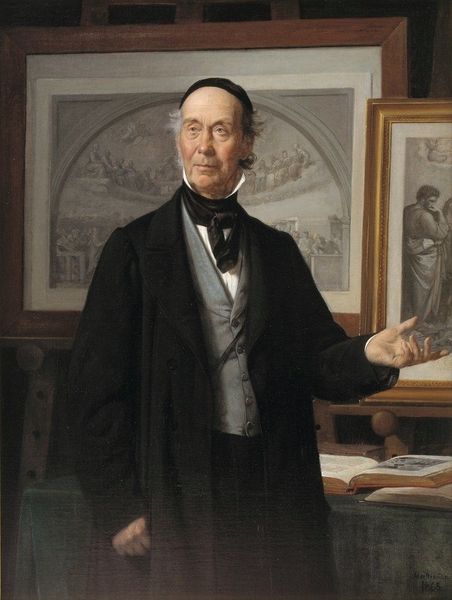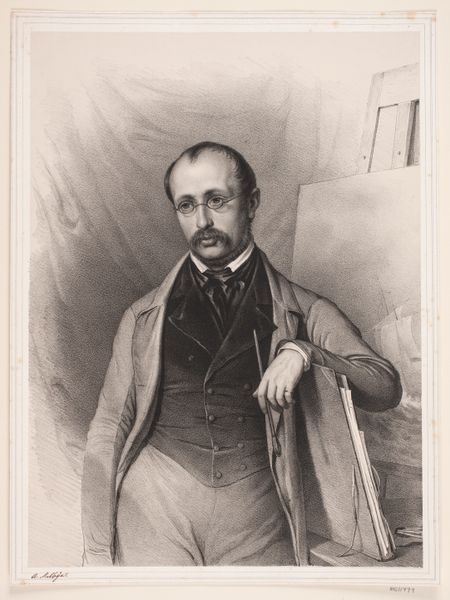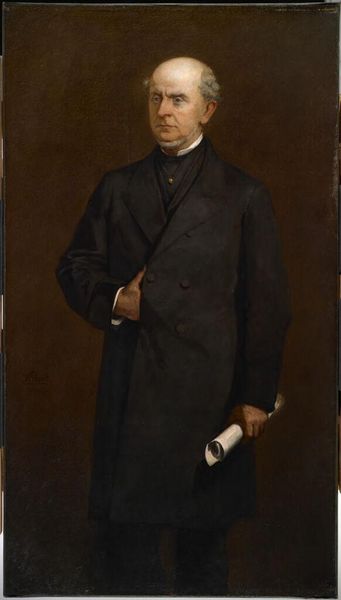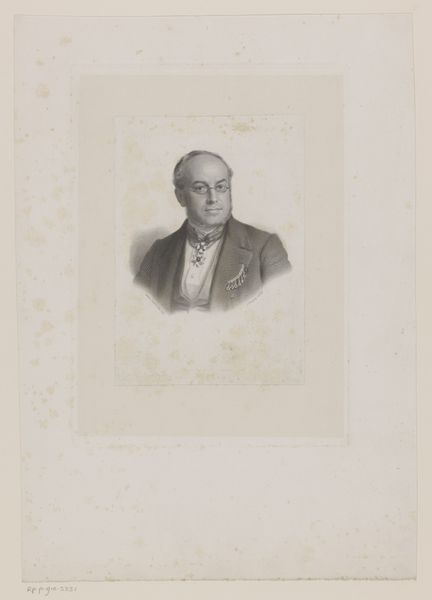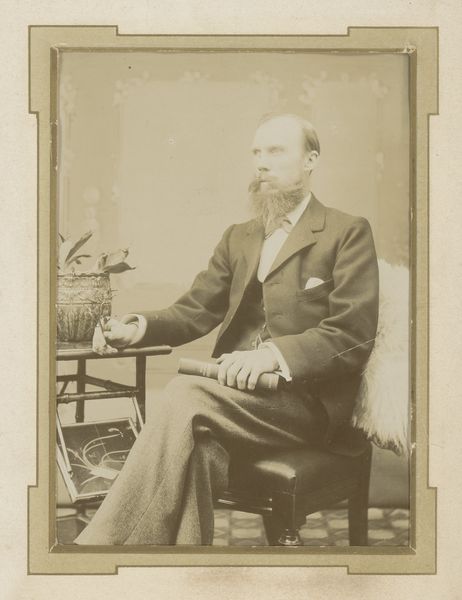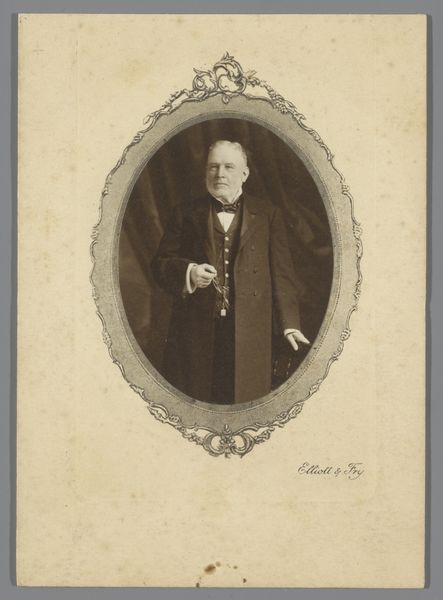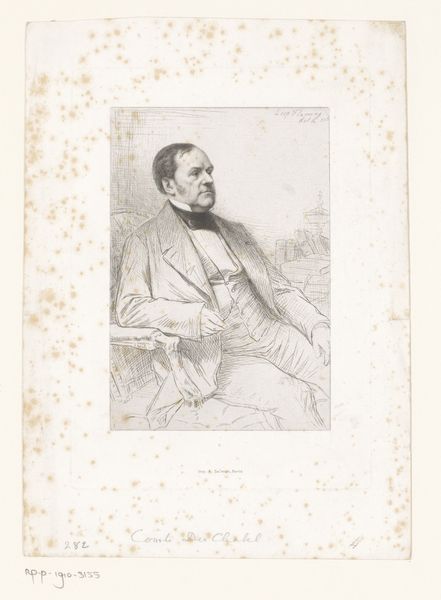
Dimensions: 129 cm (height) x 98 cm (width) (Netto), 158.5 cm (height) x 124.3 cm (width) x 5.8 cm (depth) (Brutto)
Editor: Here we have Wilhelm Marstrand's 1868 oil painting, "The Art Historian N.L. Høygen." The detail is striking, isn't it? It’s such a formal portrait, almost imposing, yet he seems to be gesturing to the art behind him. What’s your read on it? Curator: The placement of Høygen surrounded by artwork is particularly telling. It speaks to the institutional authority granted to art historians during this period, the mid-19th century, especially within the growing museum system. Note how he presents not only himself but also the artistic canon behind him. Who decided on that art? Who has access? Those were major questions then. Editor: So, it’s not just a portrait of an individual, but a statement about the power structures of the art world? Curator: Precisely. Consider also the rather opulent frame around the image - almost more ornate than the paintings in the background. Who gets commemorated in this way, and why? Marstrand may be illustrating not just Høygen's personal status but, the status of art historical institutions and individuals within Denmark at that point in history. He looks very 'official' in his sombre outfit; like a dignitary. It looks rather political, wouldn’t you agree? Editor: I hadn’t thought about the frame so much, but you’re right, it does seem to emphasize the importance of the subject, or rather the role itself. The fact it has 'NL Hoyen' in the frame also doubles up the memorial effect, the man AND his role are celebrated in the artwork. Fascinating. I hadn't considered it as being as much about institutions than individuals. Thank you.
Comments
statensmuseumforkunst almost 2 years ago
⋮
Niels Lauritz Høyen was Denmark’s first art historian and taught at the Academy of Fine Arts and at the University of Copenhagen. He introduced order to the national collection of portraits at the Frede¬riksborg Museum and was curator of The Royal Collection of Paintings (later SMK). He was on the board of the exhibition venue “Kunstforeningen” and was Denmark’s leading art critic. Høyen defined, acquired, and exhibited what he regarded as good Danish art. A firm nationalist, he believed that art should serve the people and the nation, not just Beauty. Eckersberg was his hero, Abildgaard quite the opposite, and several artists were caught in between. C.A. Jensen, who painted the portrait of H.C. Ørsted (r), had too coarse and un-Danish a style for Høyen’s liking; he had to give up his career because of Høyen.
Join the conversation
Join millions of artists and users on Artera today and experience the ultimate creative platform.
